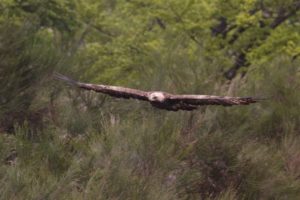Status of the Golden Eagle Aquila chrysaetos in the Western Alps
Fasce P, Fasce L., Bergese F.
Abstract:
A survey on the Golden Eagle Aquila chrysaetos in the Italian Western Alps (Liguria to Aosta Valley) was initiat ed in 1972. Since 1983, one of the authors (FB) started collecting data and since 1986 has been monitoring the whole population in the Cuneo province (Fasce et al. 2011). Every year the highest possible number of the known pairs was monitored in different periods, as recommended by Fasce (1982), i.e. at least three times: before laying, during brooding and rearing and after fledging. Furthermore, new potential territories have been explored. We collected data about pair composition, nests used and reproduction. Whenever it was not possible to carry out monitoring during the breeding period, one or more visits were carried out post fledging (in August and September), following the methodology suggested by Fasce (1982), consisting in at least three long observations of the pair, without the young interacting with them. The number of known pairs has progressively increased and is now 168. We evaluated the population at the beginning of the study to be between 70 and 90 pairs in the study area (Fasce et al. 2011): therefore the population has almost doubled. The increase was progressive (Fig. 1): in 1984 the number of known pairs was 82 (Fasce & Fasce 1984); in 1992 it had increased to 91 (Fasce & Fasce 1992), in 2003 to 129 (Fasce & Fasce 2003), in 2008 to 144 (Fasce et al., 2011), in 2013 to 160 (Fasce & Fasce 2013).
